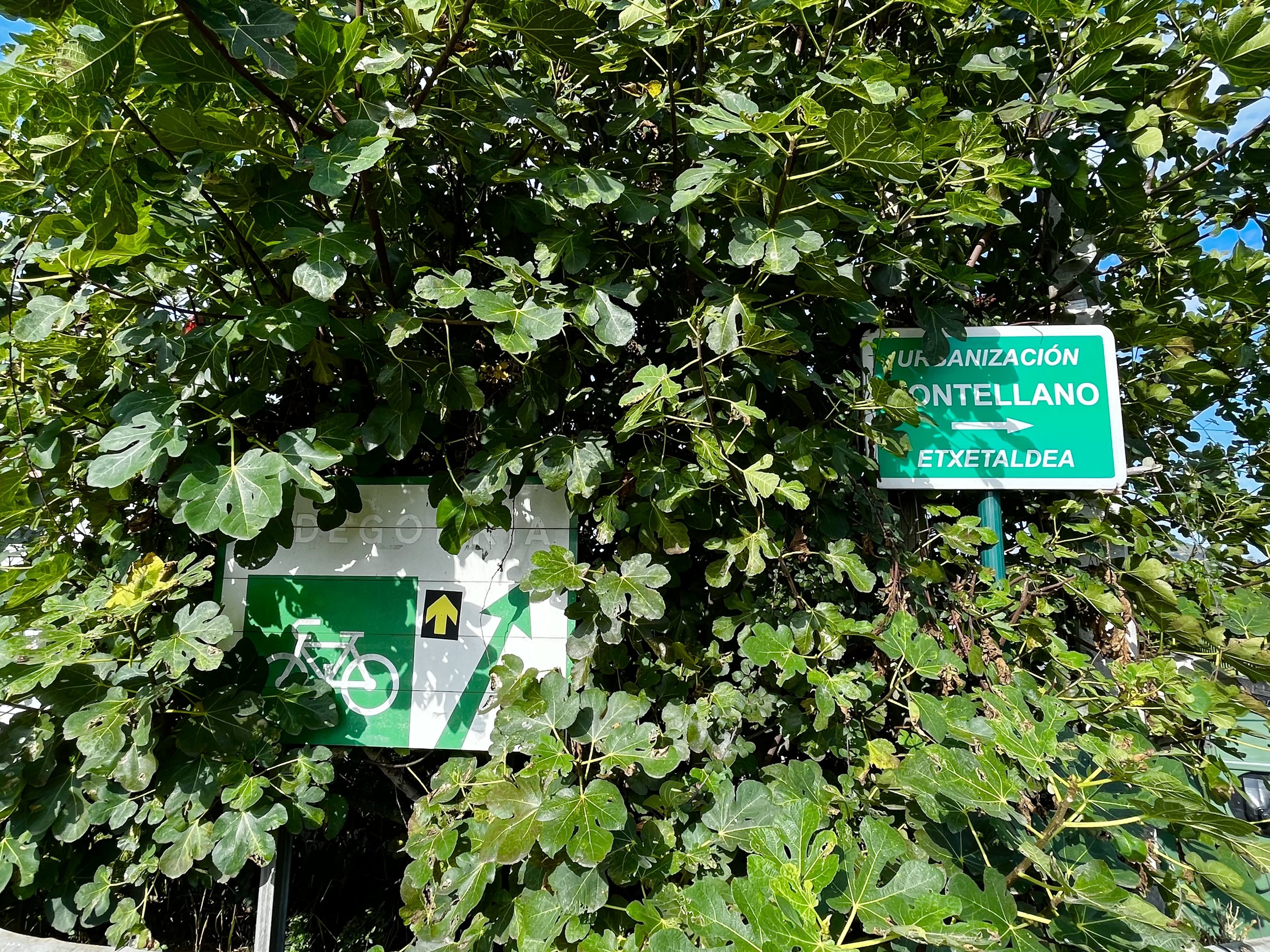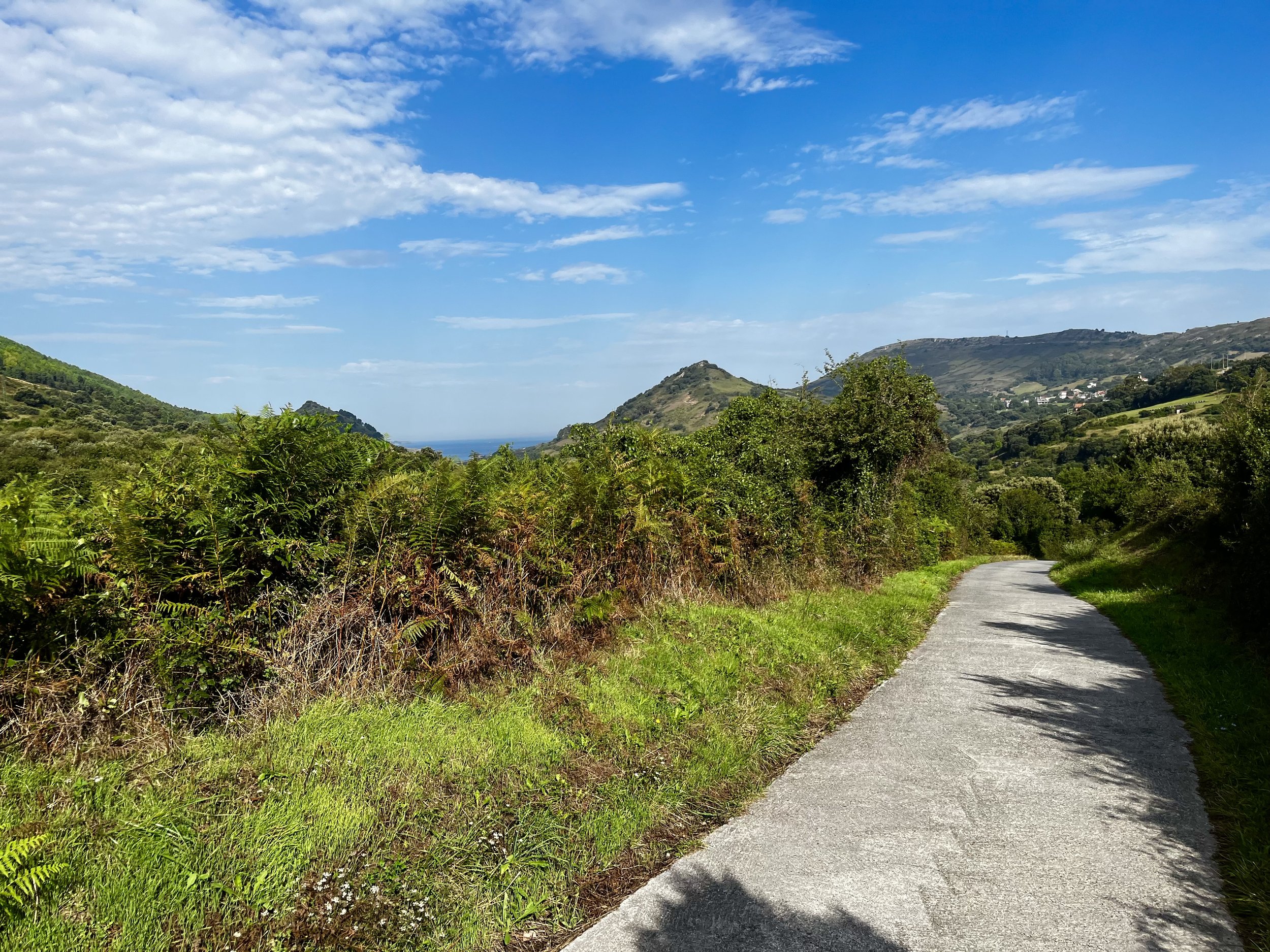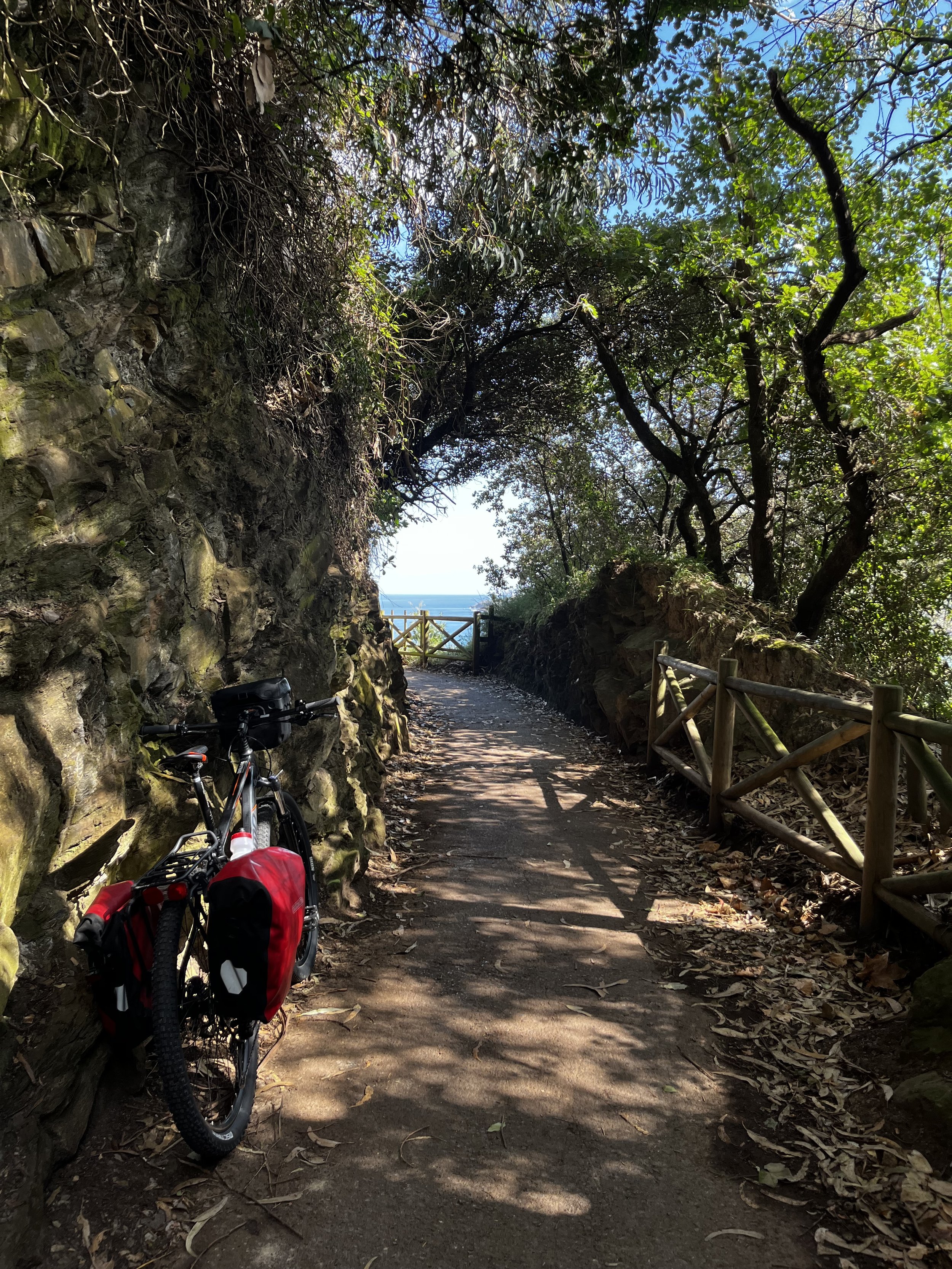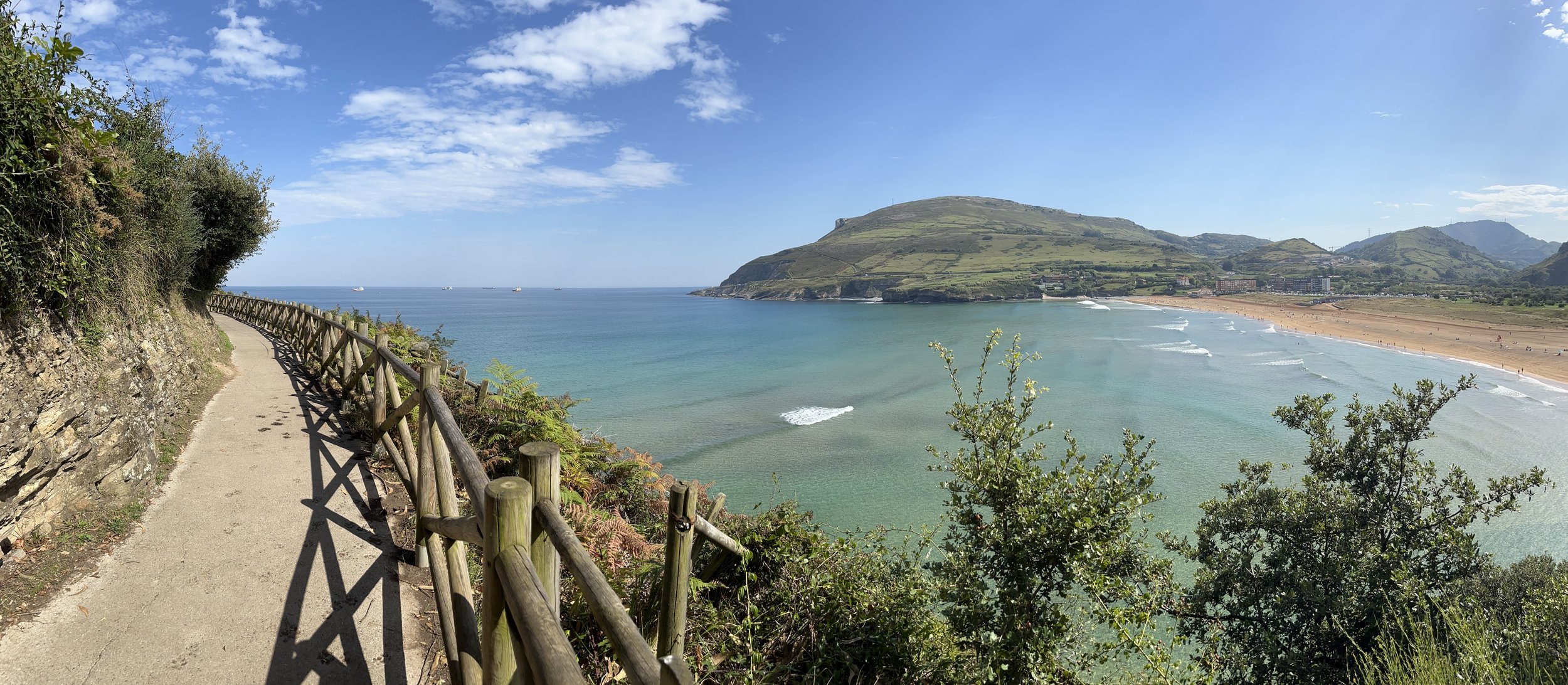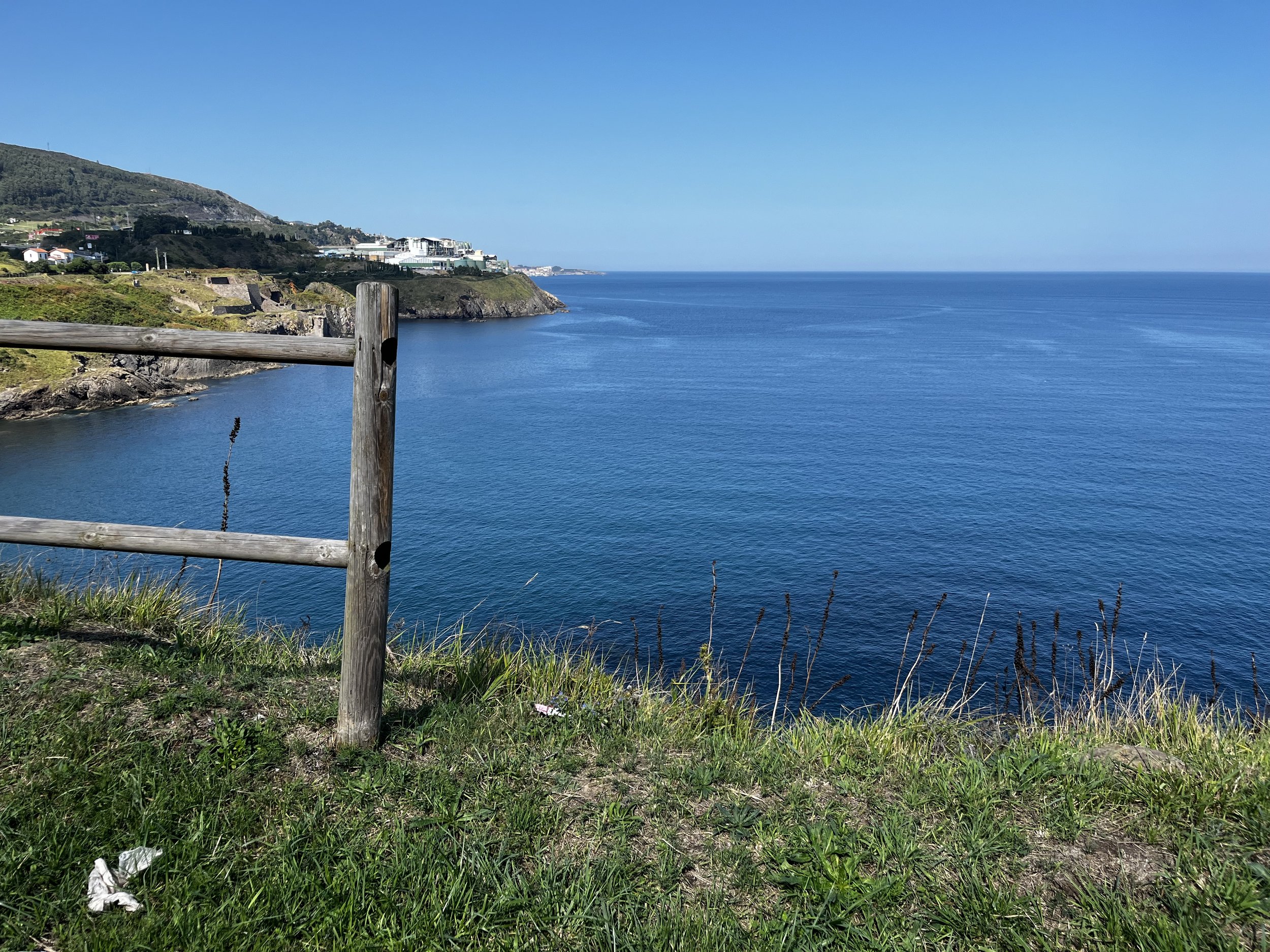Day 5 to Castro Urdiales
8 September 2023 Day 5 ended up being a 40 km day
(Ok, I confess, I took a couple of short cuts). On parts of the original Camino route, bikes are not allowed for a good reasons of safety for the walker and the cyclist, hence diversion to nearby roads or other trails .
Well, as all can see from this update, I again have a bit of a connection to the old Camino Wi-Fi and I’m able to do some simple cleanup on the website (grammar and spelling corrections of ‘voice transcription’ errors), establish a simple formatting protocol and get a little bit of content uploaded before I fall behind again. It took quite a bit of time last night (this is all done on an iPhone mini fatigued and flat on my back on my camino bed - not a laptop or tablet), but here we go~
Today at first glance, it appears to be a fair amount of urban cycling until I get to Portugalete.. many ‘stage’ routes include options for the traditional Camino route on foot or bike, or an occasional cheat like todays’ along the river Nervion which I am electing to take today, as it will be a wee bit more level, generally following close to the river bank. It will possibly be 7 to 10 fewer kilometers today, but I feel no guilt over this! I’m tired. This trail / route was awesome and relatively free of biking hazards.
The route guidance suggested by my travel partner agency is usually a correct one for cycling, but not always. Therefore, I have to refer to a wonderful app called Buen Camino that has the cycling variances (shown) both those suggested (optional) and those required (due to trail conditions ) as they occur on a live GPS map. Example; the route after my stay at the monastery yesterday (epic) would’ve had me trying the walking route, which would’ve been a disaster. I heard it was very muddy and one cyclist four days ago elected to give it a go and got stuck in ankle deep, could not retreat, and had to be rescued.
Not a good scenario.
I connected with the only other cyclist yesterday morning, and she did indeed share with me a required route is on the local highway through the mountain, which was fine by me other than the fact that the, ascents and decents are numerous, which translates to epic.
It will also give me the possibility of finding a cycling or a sport shop at the next large town to get some bicycle shorts with padding. I did not bring mine as I was concerned about the extra weight- well that turned out actually to be a rather stupid idea as the rumpus among us said;
“why did you do that to me you cheapskate”
So I set out close to eight and I just don’t remember it being quite so dark this late in the morning two years ago when I walked,
Once again, I left my mochila at the front desk with most of my possessions, hoping that it will end up at my next lodging through the Spanish Correos service (postal). So far so good knock on wood.
I rode along the river for most of the morning and a third of the total distance, and while urban, it was really quite beautiful and relatively flat, and was in use by many commuting to work by bicycle (see picture below)
Entering the Cantabria Region ! Yay!
While Cantabria is a popular holiday destination with Spaniards, international tourism remains (thankfully) largely unaware of its outstanding qualities.
Sea, mountains, beaches, art, culture, spas, gastronomy, monuments and caves. Cantabria caters to a myriad tourist interests in a compact, easily manageable territory. The region offers all kinds of leisure activities and plenty of opportunities for relaxation, complemented by a wide range of accommodation options, both inside and outside urban areas.
Culture and nature are two of Cantabria ́s major attractions. This region, with an area of 5,300 square kilometres, hosts 37 conservation areas and a rich cultural heritage crowned by the prehistoric caves of Altamira.
Santander is the region’s beautiful and peaceful capital, surrounded by a spectacular landscape and eleven, breath-taking sandy beaches, ideally suited for sunbathing and relaxing. The heat, the sun and the generally humid climate nurture the forests and lush vegetation, earning the region its “Green Coast” denomination. Here, we will find ancient and elegant coastal towns and a landscape that becomes more and more dramatic and rugged as it progresses towards the west. Isolated coves await us along the coast and, moving further inland, the fantastic “Picos de Europa” with its snow-capped peaks and steep canyons. Cantabria’s colourful and popular traditions make it a memorable, never disappointing vacation destination
Gastronomy of Catabria:
Along the coast, “marmita the atún” is an absolute must and is often served gratis with a salad. On the menu, you will also find salmon dishes, “el arroz santanderino”, which is made with rice and milk. Other appropriate local dishes are “bocartes rebozados” (anchovies), “rabas” also called “calamares” (as squid rings) and “almejas a la marinera” (mussels “marinera” style).In general, the seaside menu mostly relies on savoury integredients such as sardines [sardinas - love them] anchovies [anchoas], mussels [almejas], tuna [atún], hake [merluza], monkfish [rape] and squid [pulpo or calamares ].
Inland, in the mountains, hearty meats and strong well aged cheeses earn the region its well-deserved fame.
Typical -and rather strong by American standards- cheeses include Tresviso (a blue cheese) but milder cheeses also abound. “La quesada”, made of fresh cheese, butter and eggs, is a favourite with locals. Blue cheeses are among my favorite, and it became my go-to for the rest of my Camino (combined with vino Rioja and dark chocolate !
Biking past the Guggenheim Museum
Many of Spain’s major boulevards (larger cities) are very bike friendly with dedicated lanes that are heavily used. I would love to see the much higher adoption to bike commuting back home - but the ‘love affair’ with the automobile and gigantic SUVs and trucks is actually increasing. It also is commonly known that bikers get a 1.5 m rightaway on roads with no shoulder. And on smaller highways bikers out on road bikes for long rides typically take up half of the entire lane and cars have to wait to go around when it’s OK to pass.
The Puente de Vizcaya
Since July 13, 2006 the Puente de Vizcaya is included in UNESCO’s World Heritage list, the only such monument in Basque Country, and the only one in the Industrial Heritage category in all of Spain. It was the first transporter bridge in the world and has been in service since its inauguration in 1893.
This excellent feat of engineering was designed by Biscay-born architect Alberto de Palacio, a follower and collaborator of Gustave Eiffel, the creator of the famous tower in Paris. Indeed, the bridge resembles the tower quite closely; it stands at the point where the estuary of Bilbao widens to join the sea.
Popularly known as the “Puente Colgante” (hanging bridge), it is a spectacular iron structure that links the towns of Portugalete and Getxo, on either side of the estuary.
After paying the €1.5 fare two of us bikers got on and crossed with pedestrians and cars to get to the other side. The tram is hung by cables and can be seen in the lower left at street level. While a bit primitive by modern standards it was a very big deal back at its inception.
As much as I was paying attention to navigation this signage for the turn to return to the Cantabrian Sea was very difficult not only to see but to decipher. How do you decipher ambiguous? Hmmm, left or right?
What a great trail down to el mar y la playa del Plastron !
It turned out to be a beautiful paved trail for pedestrians and bikes, and was both quite steep downhill, and gentle down grade all the way to the town of La Molaka
La playa del Lastron
At the other end of the beach, I thought there was a clay pigeon shoot, because I heard booms going off on and off for a half an hour. It was a church celebration, to Nuestra Señora every September 8, ( to Mary), however, there was an equal likelihood that it was jointly celebrating the patron saint of fireworks. Loud canon like booms ! Nonstop. They were being launched from the tiny plaza next to the Ermitra de Nuestra Senora de Socorro y San Pantaleon de Pobena! One of them was clearly into ‘Canons’ back in the day (joke). I watched the huge procession with the ‘Señora’ statue. I walked around a little more and caught my breath before the ever mindful need to move on.
It took a while to find the Camino route out of town. I asked a food truck guy where and he pointed to the stairs behind him. I wasn’t sure once I saw them. The way to get up to the ridge trail / Camino seaside route (below) - was up a very very steep set of stairs - count them, 200+ steps, on which I had to push my 40 pound bike straight up. This was very difficult.
Am I actually on the right path for a biker to do this ! ? Halfway up, no turning back. Oofdah! But I did land up on the flat of the park which ran all the way to the next town one of the most incredible views and riding thus far! Once again the reward. Head west and I know I’ll be ok until the next flecha amarilla
How do you spell no pain no gain?
Several stretches had guard rail missing and yes, a couple of the adjacent posts had flower bouquet memorials ! Biking in the niebla (fog) and going over the edge ? :(
Destination in the distance - delightful Castro Urdiales
Highlight of the day: I am actually the one in the picture of these epic vistas that I’ve seen online and in other travel blogs for the last year and a half! Wundershoen!
“To feel the pull, the draw, the interior attraction, and to want to follow it, even if it has no name still, that is the “pilgrim spirit” The ‘why’ only becomes clear as time passes, only long after the walking is over.”
~ Kevin A. Codd ( from Beyond Even the Stars: A Compostela Pilgrim in France)



